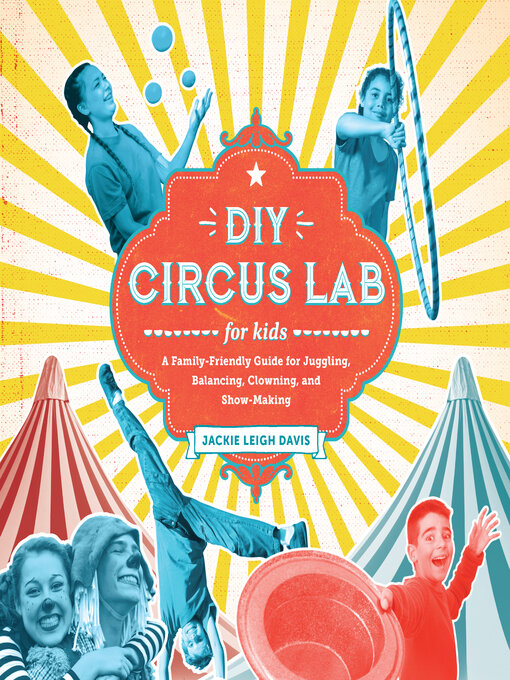Veteran circus educator Jackie Leigh Davis takes you, step by step, through the props and skills you need to perform all the major circus arts:
Did you know that a tight rope walker in Ancient Greece was called a funambulus? Or that female jugglers can be found pictured in 4,000-year-old hieroglyphs on the wall of an Egyptian tomb? DIYCircus Lab for Kids includes the history of each family of circus skills. "Circademics" sidebars explore the science and academics behind the circus activities, like how the brain changes when you learn how to juggle.
"Circussecrets" sidebars throughout connect circus arts to social and emotional skills, like listening, persistence, and asking for and giving help. Many of the skills in this book are safe enough for kids to do themselves, with a few requiring an adult "spotter" so families or classes can enjoy them together.
Once you've learned how to create your own circus with DIY Circus Lab for Kids, you can also: host a circus prop–making party, start a juggling club at school, clown at a senior center or daycare, start a community circus meet-up in a park, or integrate circus themes into your school's curriculum—the opportunities for circus fun are endless.
The popular Lab for Kids series features a growing list of books that share hands-on activities and projects on a wide host of topics, including art, astronomy, clay, geology, math, and even bugs—all authored by established experts in their fields. Each lab contains a complete materials list, clear step-by-step photographs of the process, as well as finished samples. The labs can be used as singular projects or as part of a yearlong curriculum of experiential learning. The activities are open-ended, designed to be explored over and over, often with different results. Geared toward being taught or guided by adults, they are enriching for a range of ages and skill levels. Gain firsthand knowledge on your favorite topic with Lab for Kids.



